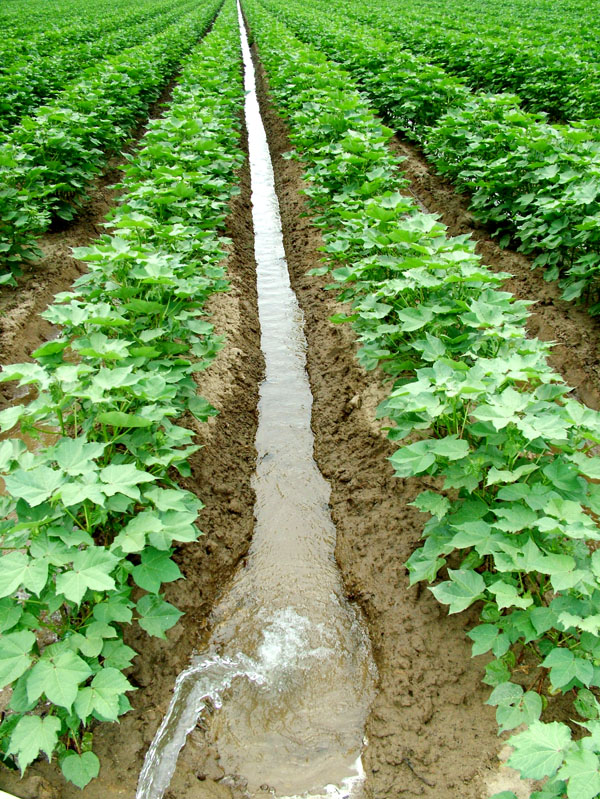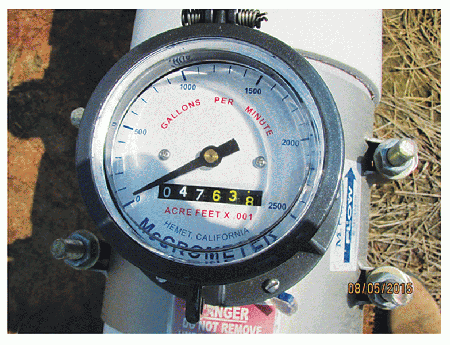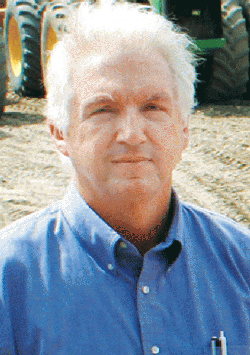
Delta farmers who used surface water, tailwater recovery, and on-farm storage systems were able to save 11,069 acre feet of water in their crop production systems.
A total of 45 systems were included in the analysis, and the savings was documented by flow meters installed on the systems, says Paul Rodrigue, supervisory engineer for the USDA Natural Resource Conservation Service Area 4 office at Grenada, Miss. The farmers utilized NRCS programs and financial assistance.
Stay informed on what’s happening in Mid-South agriculture: Subscribe to Delta Farm Press Daily.
The study showed:
• The six surface water pumps that were checked saved 1,639 acre feet of groundwater by utilizing surface water.

Flow meters were key to monitoring water savings for various irrigation management strategies.
• The 16 tailwater recovery systems that were checked saved 3,083 acre feet of groundwater by utilizing irrigation return flows and storm runoff. These were independent tailwater systems, not connected with an on-farm storage system, where the water is pumped directly to fields.
• The 23 on-farm storage systems that were checked saved 6,347 acre feet of groundwater by utilizing irrigation return flows and storm runoff. The greatest percentage of water stored and used was winter runoff.
“These systems ranged in age from one to four irrigation seasons,” Rodrigue says. “It was the first NRCS water systems survey. In the future, we hope that annual savings from these systems will be documented for the individual irrigation season.”
Nutrient reduction goals

PAUL RODRIGUE
The Mississippi River Basin Initiative accounted for 90 irrigation storage reservoirs (Practice Code 436) that were installed by cooperators, including both tailwater recovery and on-farm storage.
“The purpose of the Mississippi River Basin Initiative is nutrient reduction,” Rodrigue notes, “and these systems were designed to capture runoff and associated materials (examples: sediment and nutrients) and store them until they could be reapplied to the land. Water conservation was a secondary benefit.
Important upcoming events: Delta Farm Press Calendar of Events
Other programs accounted for an additional 87 irrigation storage reservoirs (Practice Code 436) installed by cooperators, he says, including both tailwater recovery and on-farm storage. These programs were primarily for historically underserved cooperators (19 systems) or state/county-based resources concerns, typically water quantity (68 systems).
Only 39 of 177 irrigation storage reservoir systems accounted for 9,430 acre feet of reduction in groundwater use, Rodrigue says.
“Other NRCS programs, made possible by local sponsor and partner support, and implemented by individual farmers, include the Mississippi Water Conservation Management Project (MWCMP), which supports the implementation of the RISER concept developed by Dr. Jason Krutz at the Delta Research Extension Center,” he says.
Irrigation management practices

Water savings realized from irrigation management systems: surface, tailwater recovery, and on-farm storage.
Practices supporting irrigation water management include the use of polypipe hole sizing software, surge valves, and soil moisture sensors for furrow irrigation, and associated practices for other irrigation methods (examples: multiple/side inlets). MWCMP will be available in FY16 for the third consecutive year.
“Farmers utilizing the MWCMP have so far implemented 1,291 instances of irrigation water management (both IWM plans and soil moisture sensors) on a total of 235,932 acres,” Rodrigue says. “This included 191 surge valves, 299 pump automations, and 601 flow meters, 71 center pivot renovations (drops and new nozzles), and one use of PAM (water soluble polyacrylamide).”
Polyacrylamide treatment of irrigation water is one of the fastest growing conservation technologies in irrigated agriculture, according to the USDA’s Agricultural Research Service. Furrow irrigation-induced erosion is nearly eliminated by small additions of PAM to irrigation water, says the ARS, noting that PAM is an environmentally safe industrial flocculent widely used in municipal water treatment, paper manufacturing, food processing, and other sensitive applications.”
“Cooperators who haven’t had a Mississippi Water Conservation Management Project contract are encouraged to file a program application with their local NRCS office to explore the potential of Irrigation Water Management/ RISER methodology while financial assistance is available,” Rodrigue says.
He notes that NRCS financial assistance programs offer a continuous signup. Specific signup deadlines are established for ranking, contracting, and funding, with additional ranking deadlines established if additional funding is available. Details are available at NRCS offices.
About the Author(s)
You May Also Like




